- JST Home
- /
- Strategic Basic Research Programs
- /
 ACT-X
ACT-X- /
- Research Director/
- Hardware in Future for Resilience of Real Space/
- [Hardware for Resilience] Year Started : 2023
[Hardware for Resilience] Year Started : 2023
Yohei Aikawa
Reconfigurable combinational circuit based on linear optical calculation
Grant No.:JPMJAX23K1
Researcher
Yohei Aikawa
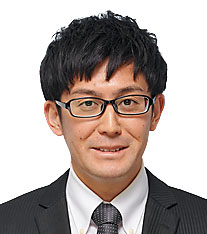
Assistant professor
Institute of Integrated Research
Institute of Science Tokyo
Outline
In this research, we will work on the realization of low-latency and low-power digital logic circuit. In particular, we focus on photonic vector matrix multiplication (PVMM), because PVMM is used in the identification problem for analog signals. By considering the input-output relationship in logic circuits as an identification problem, we thought that arbitrary logic circuits could be realized in the optical domain by using PVMMs. In the current fiscal year, we will clarify the operation requirements when PVMM is used as a logic circuit.
Kenta Iitani
Development of a fluorescence-based biosensor module for measuring volatile chemicals emitted via the skin
Grant No.:JPMJAX23K2
Researcher
Kenta Iitani
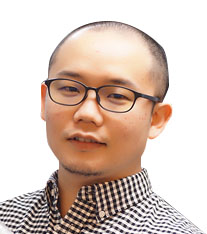
Lecturer
Institute of Integrated Research
Institute of Science Tokyo
Outline
Various volatile chemicals that are useful to monitoring health status constantly emitted via the human skin. This study aims to develop a fluorescence-based biosensor module to measure those volatile chemicals by employing substrate specificity of enzymes. This research will design optical elements that can guarantee sensitivity even when miniaturized, and together with the development of continuous measurement methods that do not require peripheral devices such as flow cells, will facilitate their integration into small devices. The final goal of my study is to promote the development of multi-sensor fusion wearable devices that will ultimately realize a “personal health forecasting” society.
Jun Usami
Development of Micro Resonant Pyroelectric Power Generation Device
Grant No.:JPMJAX23K3
Researcher
Jun Usami
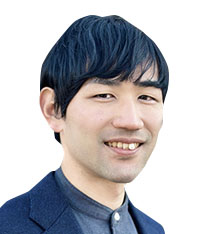
Researcher
Core Electronics Technology Research Institute
National Institute of Advanced Industrial Science and Technology (AIST)
Outline
While it is difficult to use the micro heat emitted by IT equipment, the amount of emission is increasing. There is a need for power generation technology that is compact, can be incorporated into IT equipment, and has a high power generation density even for micro heat. We propose a new technology that can generate electricity at high efficiency continuously, even with the micro heat, by combining the pyroelectric effect of ferroelectric thin films with MEMS resonators. In this research, we will demonstrate the possibility of power generation even with micro-sized heat sources below 100 degrees Celsius, and provide a path to practical technology with high power generation density.
Yusuke Oteki
Development of waveguided solar cells for energy harvesting
Grant No.:JPMJAX23K4
Researcher
Yusuke Oteki
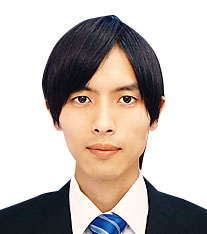
Research Associate
Research Center for Advanced Science and Technology
The University of Tokyo
Outline
Our country has been leading the development of high-efficiency, large-area solar cells. However, the residential solar cell market is nearing saturation. To pioneer new markets, it is crucial to be at the forefront globally in the research and development of compact solar cells that effectively utilize microenergy. In this research, we propose waveguided solar cells that are illuminated from the side. Efforts are focused on three challenges: simplification and miniaturization of the process, enhancement of efficiency through the photonic waveguide mode structure, and scalability of output.
Takayuki Okamoto
Introducing Three-Dimensional Structural Analysis to Intraoperative Rapid Pathological Diagnosis through the Power of Micro-CT
Grant No.:JPMJAX23K5
Researcher
Takayuki Okamoto
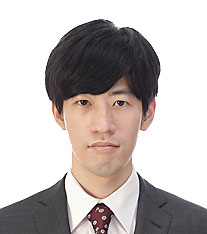
Assistant Professor
Center for Frontier Medical Engineering
Chiba University
Outline
Intraoperative rapid pathological diagnosis is a diagnostic method that can rapidly evaluate tissues submitted during surgery, providing immediate feedback to the surgeon. So far, this diagnosis has relied solely on microscopic two-dimensional information. However, incorporating macroscopic three-dimensional information obtained from micro-CT with high spatial resolution to the diagnosis has much potential to achieve comprehensive diagnoses. This study aims to develop a high-speed and high-quality micro-CT capable of imaging biological tissues and to work towards its practical application in intraoperative rapid pathological diagnoses.
Ayato Kanada
Snake robot with a body that can actively bend at any position
Grant No.:JPMJAX23K6
Researcher
Ayato Kanada

Tenure-Track Associate Professor
Graduate School of Informatics and Engineering
The University of Elctro-Communications
Outline
We propose a new snake robot with a body that can actively bend at any position. First, we build a prototype of the proposed mechanism and clarify the advantages of the active bending body. Next, we establish a method for estimating external forces using potentiometers to determine the state of contact between the robot and its environment. Finally, we investigate autonomous propulsion of the prototype robot in an unstructured environment.
Takaaki Kamigaki
Development of a sheet-like transparent device emitting high-intensity airborne ultrasound
Grant No.:JPMJAX23K7
Researcher
Takaaki Kamigaki
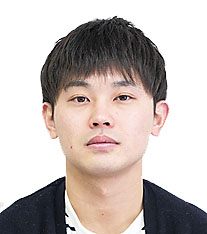
Project Assistant Professor
Graduate School of Frontier Sciences
The University of Tokyo
Outline
A high-intensity airborne ultrasound can present a tactile sensation on the skin surface without physical contact. This technology has not prevailed in our daily lives, although it has been partially commercialized, such as non-contact touch panels. This situation is due to current airborne ultrasound devices, which are high-cost, bulky, and untransparent. This project aims to realize low-cost and transparent sheet-type devices to solve these problems.
Hiromi Kimura
Development of X-ray imaging system for quality managements
Grant No.:JPMJAX23K8
Researcher
Hiromi Kimura
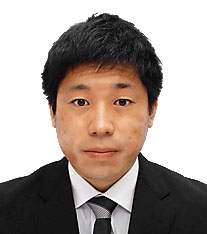
Attached to Research Group
Research Institute for Measurement and Analytical Instrumentation
National Institute of Advanced Industrial Science and Technology
Outline
Semiconductor devices are becoming more complex due to miniaturization and 3D stacking technologies, making it more difficult to ensure device quality and safety. In this study, to realize the highly accurate and efficient non-destructive inspection, we will develop X-ray imaging device with high sensitivity and spatial resolution based on the synthesis techniques of transparent ceramic scintillators.
Tomoya Koshi
Development of electrochemical pressure source for pneumatic soft robots
Grant No.:JPMJAX23K9
Researcher
Tomoya Koshi
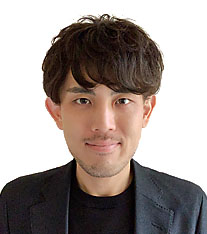
Senior Researcher
Sensing Technology Research Institute
National Institute of Advanced Industrial Science and Technology (AIST)
Outline
While pneumatic soft robots can move flexibly due to the compressibility of air, their drive systems are composed of multiple elements, making it difficult to reduce size and weight. This research develops an electrochemical pressure source utilizing water decomposition and synthesis to realize a single element drive. Control of water content distribution in the electrodes and encapsulation of a highly deformable cell are studied, with the aim of making the pressure source itself function as an actuator capable of repetitive high power linear, bending, and rotational motions.
Zicong Xu
The development of stimulated hyper Raman scattering micro-spectroscopy
Grant No.:JPMJAX23KA
Researcher
Zicong Xu
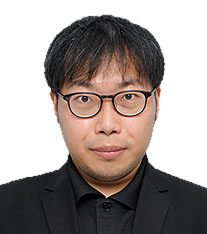
Research Fellow of The University of Tokyo
Graduate School of Science
The University of Tokyo
Outline
Hyper Raman scattering spectroscopy is a promising molecular sensing technique due to its chemical specificity. However, the sensitivity of hyper Raman scattering spectroscopy is highly limited because it is a spontaneous process, thus restricting its applications. This research addresses this challenge through the proposed method named stimulated hyper Raman scattering spectroscopy to enhance sensitivity. Furthermore, I aim to develop a stimulated hyper Raman scattering microscope with high spatial resolution and rapid imaging capabilities for in vivo biomolecule measurements.
Naruki Shoji
Multiphase Flow Monitoring Device Using Multi-Element Ultrasonic Sensors
Grant No.:JPMJAX23KB
Researcher
Naruki Shoji
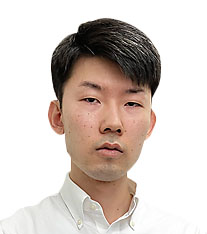
Assistant Professor
College of Design and Manufacturing Technology
Muroran Institute of Technology
Outline
Multiphase flow, in which liquids, gases, and solids flow together, appears in all production fields, such as energy resource transportation pipelines and chemical plant reactors. By visualizing the flow structure, it is possible to optimize the flow channel design and detect abnormalities during operation. This project aims to realize a new measurement device that monitors the flow structure three-dimensionally through the development of sensor, control, and signal processing systems, making full use of ultrasound that is capable of non-contact measurement with the fluid.
Hiroaki Jinno
Radiation-Resistant Ultra-Thin Perovskite Solar Cells as a Power Source in Space
Grant No.:JPMJAX23KC
Researcher
Hiroaki Jinno
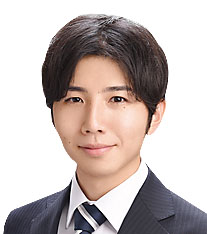
Assistant Professor
Institute of Space and Astronautical Science
Japan Aerospace Exploration Agency
Outline
In recent years, there has been growing interest in the use of ultra-thin solar cells with one-micron-thick plastic substrates as a lightweight and high power output energy source for space applications. This research project focuses on the development of perovskite solar cells integrated onto radiation-resistant ultra-thin hybrid polyimide substrates, aiming to create ultra-thin solar cells that are immune to radiation-induced degradation, both in terms of the substrates and the solar cells themselves. By advancing the technology of radiation-resistant ultra-thin solar cells, this research project aims to lead the way in developing innovative hardware solutions that will revolutionize spacecraft design, resulting in ultra-lightweight and cost-effective spacecraft systems.
Jung-Chun Sun
Development of Device Enabling the Formation of Large-size Cultured Steak Meat
Grant No.:JPMJAX23KD
Researcher
Jung-Chun Sun
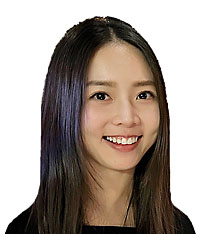
Graduate Student
Graduate School of Information Science and Technology
The University of Tokyo
Outline
Cultured meat, formed by animal cells grown outside animal body, is gaining attention as a promising alternative protein source in the meat industry. Cultured steak meat with muscle fiber in unidirectional alignment can contribute to the diversification of food culture, making the method development for its formation a crucial challenge. This research aims to achieve the fabrication of large-size cultured steak meat through the development of “Device for Fabricating Stripe-shaped Bovine Skeletal Muscle Tissue” and “Assembly Device for Integrating Stripe-shaped Tissues into Large Structures.”
Masahito Takakuwa
The flexible detachable bonding for the next-generation wearable device
Grant No.:JPMJAX23KE
Researcher
Masahito Takakuwa
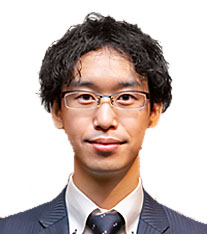
Assistant Professor
Graduate School of Engineering
The University of Tokyo
Outline
A flexible mounting method for connecting each flexible electronics is required in addition to developing the high-performance flexible electronics self to achieve the practical ultra-thin wearable device such as mounting on the skin directly. Furthermore, the detachable function is essential to enhance the useability of the device. This research plans to develop the polymer direct bonding with a detachable function using hydrogen bonding characteristics.
Yuji Tsukamoto
Liquid Crystal Optics with Patterned Surface: Enabling Functionality of Dynamic Lightwave Control
Grant No.:JPMJAX23KF
Researcher
Yuji Tsukamoto
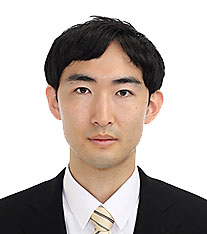
Assistant Professor (Tenure-Track Position)
Graduate School of Science and Engineering
Ehime University
Outline
Flat optics with designer metasurface have great potential, such as reduction of system size and weight, compared with conventional optical elements such as lenses, prisms, etc. However, metasurfaces have been commonly fabricated in a top-down process, which has led to productivity issues: restrictions in operating wavelength range due to nano-fabrication limitations and difficulty in large-area manufacturing. This project aims to produce flat optics with large-area sizes by a bottom-up process using the self-organization of liquid crystals. Furthermore, it demonstrates that liquid crystal flat optics can dynamically and actively control transmitted light wavefront.
Hirotaka Hiraki
Development of a Wearable Voice Input/Output Interface for Enhancing Face-to-Face Vocalization
Grant No.:JPMJAX23KG
Researcher
Hirotaka Hiraki

Graduate Student
Graduate School of Interdisciplinary Information Studies
The University of Tokyo
Outline
With the advancement of deep learning in speech processing, proposals have emerged for Speech Translation and Voice Conversion to aid individuals with speech disorders. These applications are primarily geared towards online communication as opposed to face-to-face interactions, due to the challenges in clearly capturing only the user’s voice amidst the converted voices. The objective of this research project is to design the diaphragm of an electret condenser microphone, and to develop a noise-suppressive microphone along with a lightweight, wearable, and directional speaker for face-to-face vocal augmentation using voice conversion and speech translation.
Yuki Matsunaga
High Performance, Flexible and Chemically Enhanced Physical Reservoir Devices
Grant No.:JPMJAX23KH
Researcher
Yuki Matsunaga
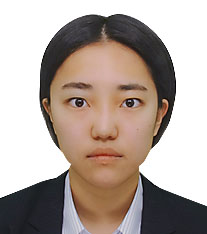
Graduate Student
Graduate School of Science
Nagoya University
Outline
In this research, we challenge to realize flexible physical reservoir devices that acquire biological information with high sensitivity by using carbon nanotubes with various excellent material properties. We try to enhance device performance by using high-purity semiconducting carbon nanotube separation and purification techniques and high-temperature stable chemical doping. We will challenge to improve the reservoir device performance by random chemical doping and polymer mixing to carbon nanotubes for realizing high-performance multimodal sensor elements.
Ryoto Yanagisawa
Thermoswitch-driven nano-thermoelectric harvester
Grant No.:JPMJAX23KI
Researcher
Ryoto Yanagisawa
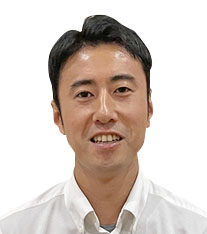
Assistant Professor
Faculty of Advanced Engineering
Tokyo University of Science
Outline
This research challenges the realization of nano-thermoelectric energy harvesters that generate electricity from small heat flows by means of a thermal switch mechanism. We will develop a thermoelectric harvester that combines a thermal switch device using surface micromachine technology and a high-performance thermoelectric generator using nanostructured semiconductor materials. This technology will realize a stand-alone powered sensor node using a micro heat source and contribute to a highly distributed and resilient IoT.
Naoto Yamashita
Electrical detection of domain wall chirality using spin current
Grant No.:JPMJAX23KJ
Researcher
Naoto Yamashita
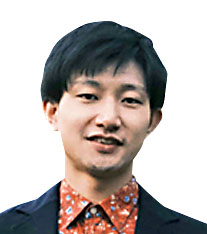
Associate Professor
Faculty of Information Science and Electrical Engineering
Kyushu University
Outline
This research aims to develop an electrical detection technique for the chirality of magnetic domain walls. A magnetic domain wall is the interface between magnetic regions in a magnetic material. In recent years, with advancements in the study of nanoscale magnetic domain structures, various computational hardware designs utilizing their chirality have been proposed. On the other hand, the method for reading the computational results is also a crucial technological challenge. By employing the flow of spin angular momentum of conduction electrons, known as spin current, we are working on the development of a common foundational technology for computational hardware using magnetic domain walls.
Takatoshi Yoshida
Designing Optical Fiber Network Embedded in Architectural Materials For Lifespace That Tactilely Senses Human Behaviors
Grant No.:JPMJAX23KK
Researcher
Takatoshi Yoshida
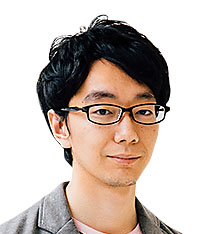
Project Assistant Professor
Graduate School of Media Design
Keio University
Outline
This research project aims at constructing a comprehensive sensor-integration approach to living spaces, such as residences and offices, aiming to achieve a behavioral measurement system that imposes minimal physical and mental invasion. Specifically, by designing integrated devices that embed optical fiber networks into building materials and furniture, we realize the ubiquitous measurement of contact forces within living spaces. This approach enables the foundation for measuring and analyzing various daily activities of inhabitants. Through the fusion of architectural and optical measurement technologies, we enhance the resilience of real-world spaces, thereby augmenting the value of all spaces.
Kou Li
Development of transparent photo-thermoelectric goggles for cyber-physical-integrated inspections
Grant No.:JPMJAX23KL
Researcher
Kou Li
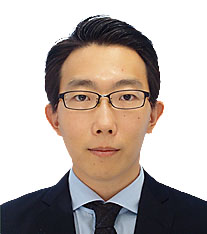
Assistant Professor
Faculty of Science and Engineering
Chuo University
Outline
This study develops novel transparent wearable goggles, that synergize inherent human vision and photo-thermoelectric images. It has been 60 years since the rush of infrastructure construction during the Japanese high economic growth period, and their aging throughout the country needs to be addressed. Conventional inspection systems are highly dependent on specific expert technicians’ personal skills, limiting sustainable operations in the upcoming ultra-low birth rate and aging society. Herein, this study designs nanomaterials-based image sensors for non-destructive inspection devices in human-interface configurations, serving as the eyesight of expert testing technicians. The device facilitates sensitive millimeter-wave–infrared photo-detection and comprises ultrathin soft-sheet structures with high visible-light transparency. Such optical performances and imperceptibility of the device bridge the gap between human and machine visions.
Lingying Li
A sustainable manufacturing platform for stretchable sensor devices based on directed self-assembly technology
Grant No.:JPMJAX23KM
Researcher
Lingying Li
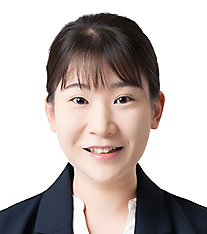
ICYS Research Fellow
International Center for Young Scientists
National Institute for Materials Science
Outline
A sustainable manufacturing platform for stretchable electronics is essential for enabling humans to acquire and transmit signals with machines and robots, thereby facilitating the realization of cyber-physical convergence in Society 5.0. This project leverages a self-developed directed self-assembly system to create an array of stretchable sensor devices, with a specific focus on strain sensing, establishing a flexible design and manufacturing platform for Human-Machine Interfaces toward practical implementation.













